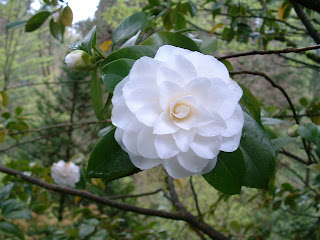Our hostel - the HI Northwest - was perfectly located between the leafy, laid-back suburb of Nob Hill and the slightly more built-up, converted warehouse zone of the Pearl District. The key strips of the former are NW 21st and 23rd Streets, both of which are filled to the brim with a quite incredible array of restaurants, bars and coffee houses. The latter has the pick of the city’s galleries: everything from tiny, one-room independent spaces to much larger and more commercial affairs. It was the Pearl District’s art scene which drew us out one evening for ‘First Thursday’, a monthly event of after-hours gallery viewings and street entertainment. Among the range of things offer were a market of arts and crafts (not meant in the tacky sea-side sense, but instead things you’d actually like to hang on your walls or put on your coffee table), live music and even some capoeira.


The city’s green spaces are also a major attraction, and will stand up to any found in its bigger, better-known cousins. It’s not so much the ‘green’ aspects, however – it’s the quirky nature they all share. Seattle has odd little nuggets of art and creativity peppering its streets and sidewalks – Portland has these and more in the shape of pieces of art and sculpture found lurking its in parks and other pockets of greenery.


 Or even just at a normal road junction.
Or even just at a normal road junction.




On the theme of greenery, a relaxing afternoon can be spent at Portland’s Japanese Gardens (once described by a visiting dignitary as the finest he’d seen outside of Japan) - a journey through five different ornamental styles. In what can be a bustling, noisy city, the gardens are an oasis of calm, a tranquil hideaway from the world – even if the most stressful thing you’ve encountered so far that day has been the walk up the hill to find them, as it was in our case.












 One of the most striking and moving parts of Portland is the Holocaust Memorial. It isn’t the only one in the world, by any means, and there are larger and more high-profile edifices dedicated to the same cause. However, Portland’s is certainly noteworthy for the comprehensive and thought-provoking narrative describing the events leading up and during the Holocaust, and moreover for how the city’s creative sensibilities are on show once again in small bronze pieces littering the grounds of the memorial. To my mind the rendering of everyday objects recalled the visitor exhibits at Auschwitz, where the most mundane personal possessions became something much more poignant.
One of the most striking and moving parts of Portland is the Holocaust Memorial. It isn’t the only one in the world, by any means, and there are larger and more high-profile edifices dedicated to the same cause. However, Portland’s is certainly noteworthy for the comprehensive and thought-provoking narrative describing the events leading up and during the Holocaust, and moreover for how the city’s creative sensibilities are on show once again in small bronze pieces littering the grounds of the memorial. To my mind the rendering of everyday objects recalled the visitor exhibits at Auschwitz, where the most mundane personal possessions became something much more poignant. 



No comments:
Post a Comment